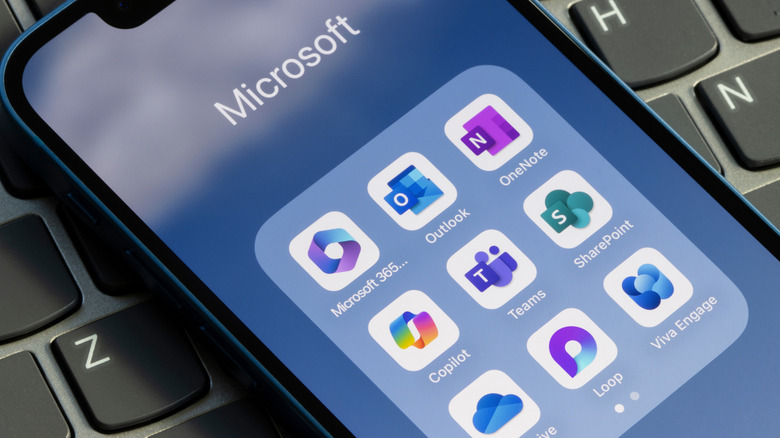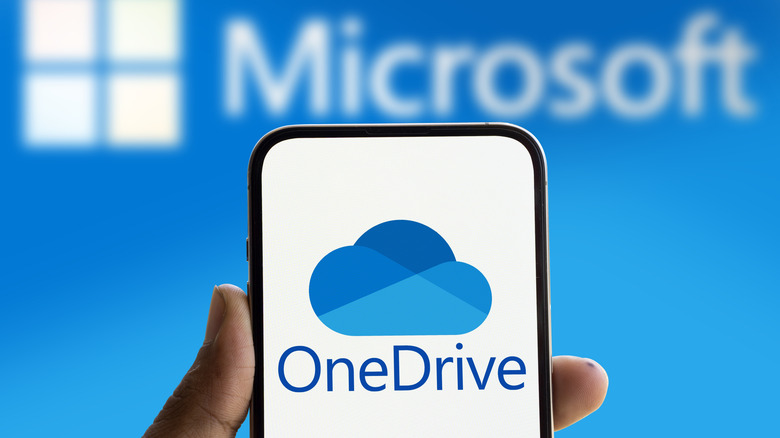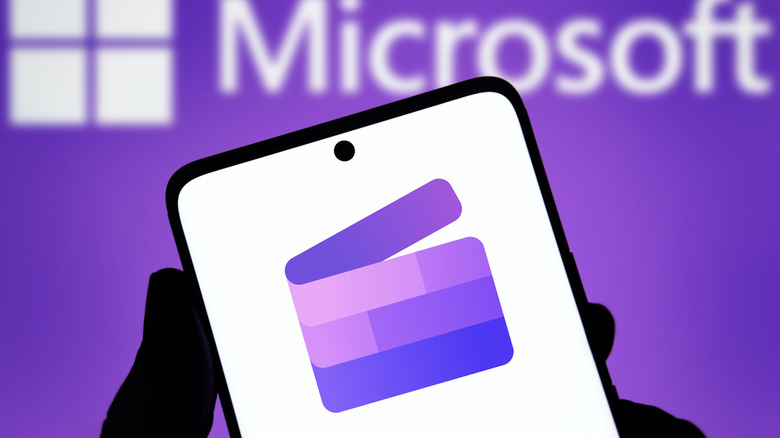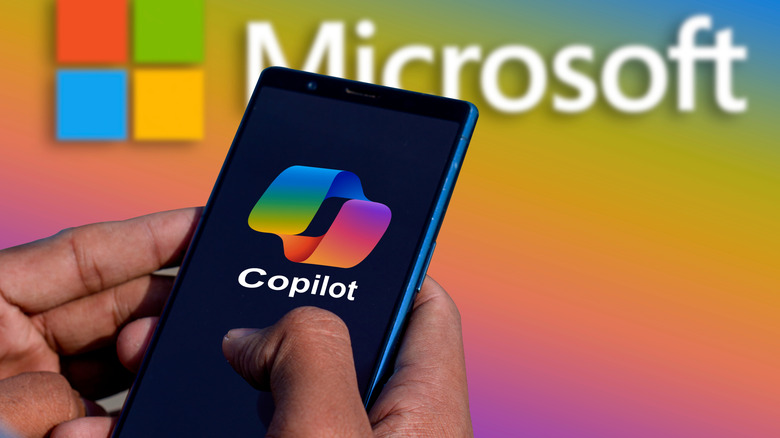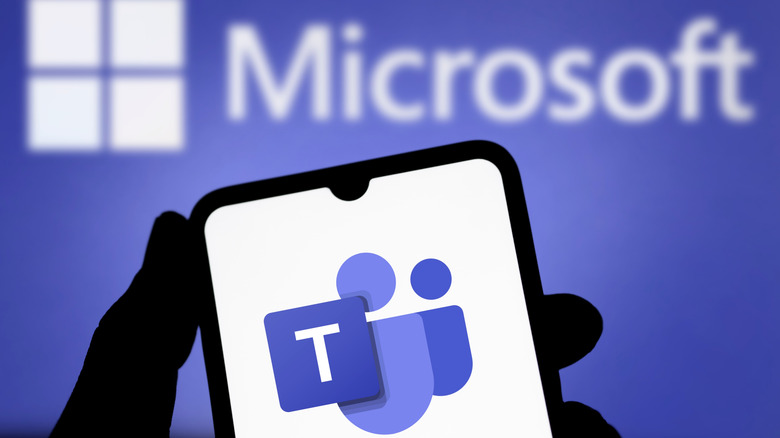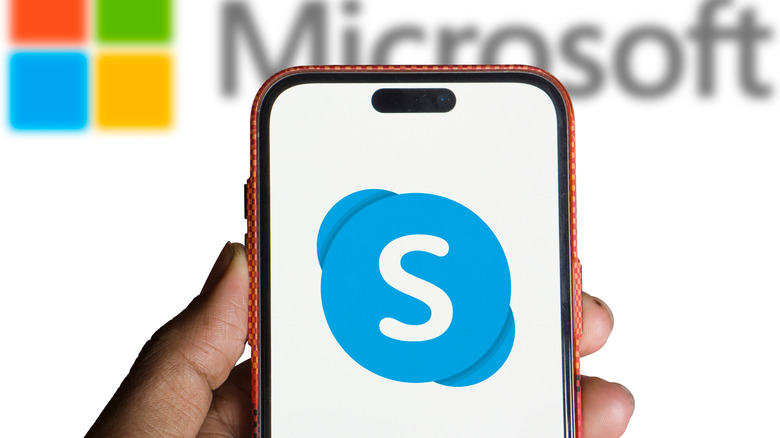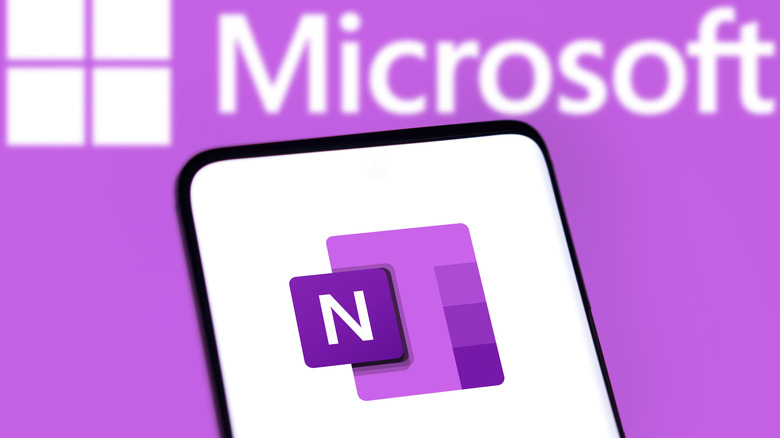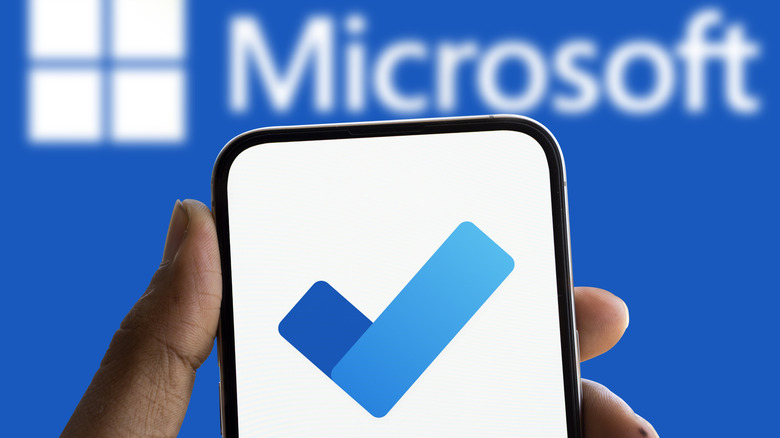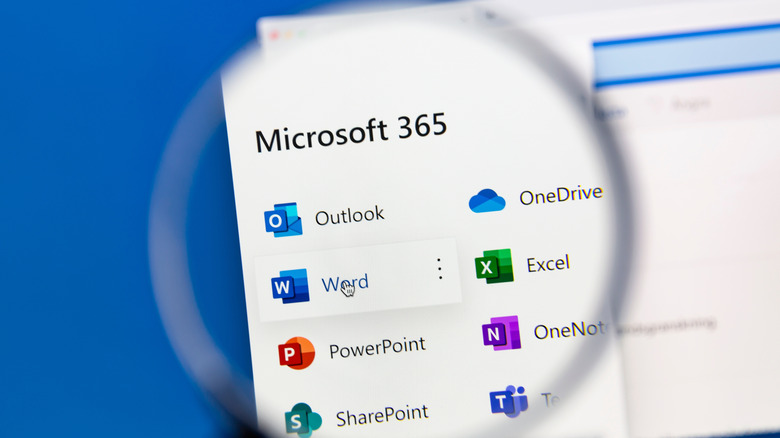7 Microsoft Apps To Avoid, And Alternatives You Should Try Instead
During the antitrust proceedings that dogged Microsoft at the turn of the 21st century, the company was referred to as "the 800-pound gorilla" in the tech industry. The Redmond software giant was seen as a massively powerful entity that threw its weight around aggressively, often leveraging its dominant market position to destroy upstart competitors. This came to a head when Netscape, an early Internet browser that had been gaining popularity, was crushed by Internet Explorer. Microsoft didn't have to make a more compelling product. Instead, it bundled Internet Explorer with Windows and made it more difficult to use browsers like Netscape.
To this day, Microsoft has developed a reputation for making apps that might not be the best, but are nonetheless ubiquitous because of how hard the company works to make them the default. If your office uses Teams because it was offered as part of an enterprise bundle, or if a portion of your middle school computer literacy course was focused on how to use Word and Excel, you know exactly what I'm talking about. But there are plenty of alternatives out there to the worst Microsoft apps, and here are just a few.
I've had to use a lot of Microsoft apps over the years, and while there are some I do enjoy, I've developed an allergy to others. I've also tested plenty of replacements for the most aggravating Microsoft apps, and have found plenty that make my life easier. So, based on how much of my hair I pulled out while using them, here are seven Microsoft apps I think you should avoid, along with alternatives for each.
Cloud storage doesn't need to be as confusing as OneDrive
Cloud storage solutions are an amazing way to back up data and transfer it between devices, making your files much easier to recover if you get a new computer or if your current one breaks. But no matter how deeply Microsoft ties OneDrive into Windows or how many annoying ads for it they stick in our faces, I would rather chew on a hot light bulb than use it.
It would be one thing if OneDrive kept files safe, but in my experience, syncing issues are frustratingly common. Did you edit a document on your phone and expect the updated file to refresh to your PC? Well, joke's on you, and you'd better hope the updated version is still available on your phone or else your hard work is gone. On Reddit, one user was on the verge of tears thanks to OneDrive's relentless attempts to mirror the Windows file system, while Microsoft's own support forums are chock full of threads with titles such as, "I bloody hate OneDrive," and, "Why is OneDrive so terrible?" And if you're a MacOS user, woe betide all who install such wretched software. One look at App Store reviews reveals that OneDrive is barely functional at the best of times, with some users claiming it has even corrupted their files.
There's no reason to subject yourself to OneDrive if you have another option. Dropbox and Google Drive have become the industry standards for a reason. They're simple, cross-platform, and integrate with a ton of other apps and services. Most importantly, they work. The one time it makes sense to even try OneDrive is when you're paying for a basic Microsoft 365 subscription, which comes with a terabyte of OneDrive storage.
Use this video editor instead of Clipchamp
In recent years, there has been a rise in lightweight video editing programs that do most of their heavy lifting in the cloud, thereby allowing them to run even on lower-end hardware. One such program is Microsoft Clipchamp, a web-based video editor. To use all of its features, Microsoft demands $120 annually, or $12 monthly. For that kind of money, you'd assume Clipchamp has some killer features that will help you become a video editing pro. Instead, it is one of the most bare-bones editing suites I have ever encountered, even compared to other free, web-based tools.
Here is a close to exhaustive list of things you can do with a video clip in Clipchamp: trim or split it, add filters and effects, adjust colors, change the speed, fade it, adjust the volume, or autocut it and generate captions with AI. Does that sound like it's worth $120 a year, or any money at all? In my opinion it isn't, and Microsoft probably knows that, since the subscription version throws in a stock video library and unlocks 4K exports.
Rather than waste money on Clipchamp, you can simply use CapCut, another cloud-centric video editor that works on mobile and desktop. Not only does it have most of the same features for free, but the paid features are actually worth paying for. Take a look at our roundup of CapCut video editing tricks that feel like magic to get an idea of how much better it is. You can even add an AI version of yourself to narrate your video. Unfortunately, CapCut may soon be banned in the U.S. alongside TikTok. If you're looking for a professional grade video editor you can use long term, there's always Adobe Premiere.
Try these Copilot competitors for your AI needs
Microsoft has gone all-in on AI in recent years, becoming one of the top investors in ChatGPT maker OpenAI. That partnership led to the creation of Copilot, Microsoft's AI assistant based on the Prometheus AI model. It's basically a hodgepodge of different OpenAI models with a bit of Redmond sauce on top. The one advantage to Copilot iasthat you're getting access to some AI models for free that you'd otherwise have to pay for. But even so, Microsoft still wants its palm crossed with silver. A Copilot Pro subscription is $20 monthly at the time of this writing.
Outside of some very specific use cases, it's still hard to recommend AI chatbots in general, so paying for Copilot is a hard sell. And Microsoft is locking some of the most useful Copilot features behind that paywall, including Copilot in Word, Excel, and PowerPoint, as well as natural language conversations and fast image generation. That's the kind of stuff other companies are giving away for free right now. If you want natural language conversations, you can use Google Gemini Live. If you want writing help, Apple Intelligence on Mac and iOS has you covered, or you can try Grammarly on pretty much any platform.
If you have extensive roots down in the Microsoft ecosystem, and if you really need an AI assistant in Office productivity software, then fine, use Copilot. But if you're looking for the best general purpose chatbot, that's currently Google Gemini, a smarter AI chatbot than ChatGPT according to our testing. It also has a built in fact checker that searches Google for sources, which makes it superior for researching complex topics. Notably, all AI models still lie right to your face, so use them cautiously.
This business messaging app is better than Teams
Look, if you're a low-level employee at a company where Microsoft Teams is the primary intra-office communication tool, you unfortunately can't change that. It was decided for you. But to anyone who may be reading this and holds the authority to switch over to Slack, trust me, your employees will probably throw a party in your honor should you do so. I, for one, remain thankful that Slack is how I communicate with my colleagues at SlashGear — because I've been on the other side of the fence, and the grass is not Windows XP green. "I hate Microsoft Teams with a depth and passion that I cannot put into words," writes one professional in a public LinkedIn post after his Teams account refused to show him as online. Meanwhile, Microsoft's own forums are full of people fuming about Teams and calling it buggy and slow, or complaining about being kicked out of meetings.
It's not that Slack is perfect, but it's mostly unobtrusive. The best business communications app is one that doesn't get in the way of, you know, communicating. Slack isn't pushing a whole suite of productivity apps like Microsoft does with Office, and it connects with lots of other apps and platforms without any fuss instead of taking the walled garden approach Microsoft prefers. Unfortunately, its pricing impedes its distribution at companies which have already invested in Microsoft 365, since Teams comes bundled with that subscription.
Zoom is far superior to Skype or Teams, but you knew that already
When a global pandemic forced large swaths of the population indoors starting in 2020, it was obvious that video calling was about to blow up in a major way. Skype seemed like the obvious candidate to benefit. After all, it had been a household name since the mid-2000s, and introduced many people to video calling through its iconic, sky blue interface (which was inexplicably full of sound effects that can only be described as uncomfortably wet). But after holding over 32 percent of the video calling market at the start of 2020 according to data from EmailToolTester, Skype's share had declined to only 6.6% by the next year. Zoom soared to 48.7% market share in 2021, becoming ubiquitous across businesses, universities, and social groups. Even Google, which is notorious for its inability to figure out a long-term strategy for its messaging products, took its Google Meet platform from 1.6 to almost 22% of the market during that time frame.
Simply put, Skype has always been popular but not well-liked. Even when it commanded a staggering share of the video calling market, it developed a reputation for laggy, broken calls. Then there was the endless spam composed mostly of sex scams and phishing, which seemed to appear the moment a user's privacy settings were loosened. In fact, Skype saw a surge in users at the beginning of the pandemic, but was quickly usurped by Zoom as people looked for a competitor that didn't suck as much. Zoom calls were hassle free, and that gave it a big advantage.
Use these note-taking apps instead of OneNote
On the surface, OneNote appears to be mostly inoffensive. There's nothing terribly wrong with it as a note-taking app. It has a relatively rich feature set, works across multiple devices and platforms, and receives constant updates. However, I used it a lot in undergrad and have made periodic attempts to return. But although I always want to like it, I found myself jumping ship every time. My old college notes show that I would often try to use OneNote on the first day of a course, only to abandon it by day two or three. That's because, like a lot of other Microsoft apps, it seems to pick and choose when it wants to work properly. A note taking app should be lightweight, so you can go from thought to jot in a heartbeat, but OneNote is unnecessarily sluggish. Fun anecdote: when I was re-testing OneNote on Windows 11 for this article, the app hung and crashed, then wouldn't launch at all until I rebooted my computer.
Moreover, OneNote is cluttered. Its desktop interface is fine, but for anyone who needs to take notes on the go, the mobile version is a mess. Thanks to its endless layers of organization, you'll spend more time looking for notes than actually taking them. There are better alternatives on the market, and the best alternatives to OneNote are likely Evernote for simple notetaking and Obsidian for people who like depth. The former requires a subscription to access its best features, but manages to balance a lot of feature density with a simple to use interface. Obsidianis quite a bit more complex, but unlike OneNote, its complexity makes it useful rather than convoluted.
Replacing Microsoft To Do should be next up on your to-do list
Microsoft To Do is one of those apps I keep wanting to like but can't. It's got some really great features, like the ability to set reminders before task deadlines, duplicate tasks, and so forth. Additionally, if your organization uses Outlook, it integrates seamlessly, and the Assigned to Me section of the app will show any tasks doled out to you by others. However, while To Do might have enough features to satisfy some people, there are many others for whom Microsoft's personal task management app is barely better than writing things down on scraps of paper.
What I can say is that To Do clears the very low bar of being better than the practical joke on its own users that is Google Tasks. But if you want a to-do app that truly shines, you should have a look at Todoist and Any.do, two apps that make Microsoft Tasks look paltry by comparison. I've talked about Todoist before in our roundup of essential Android productivity apps, and I still love it for its ability to adapt to your needs. It can be a simple checklist or an information dense project manager depending on how you use it, and it integrates with lots of other programs like Google Calendar and Slack. Any.do, meanwhile, has features like an AI that breaks tasks into subtasks, as well as a Kanban style view that makes it easy to get a high level view of everything on your plate. As opposed to Any.do, it's free, which might make it a good To Do replacement. Both apps have desktop apps and browser extensions to further enhance their versatility.
Methodology
The apps selected for this list, along with those suggested to replace them, were determined based on extensive, hands-on experiences and testing. Each app was tested for a period of time ranging from a few weeks to several years in the case of apps that are part of my personal workflow. However, all recommendations remain subjective to some degree, and these are not one-size-fits-all suggestions. Some of the apps I've recommended people to avoid may not present the same issues and limitations universally to all users, while the apps recommended to replace them may likewise not be the best fit for everyone.
